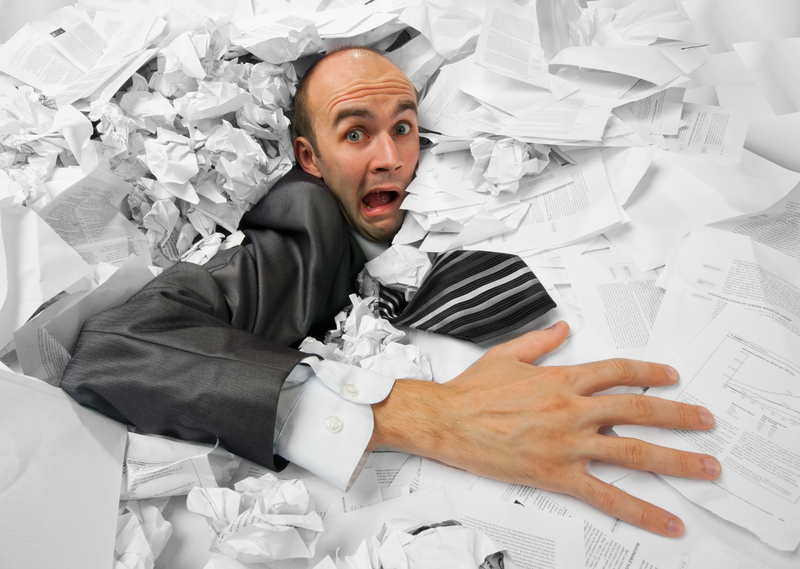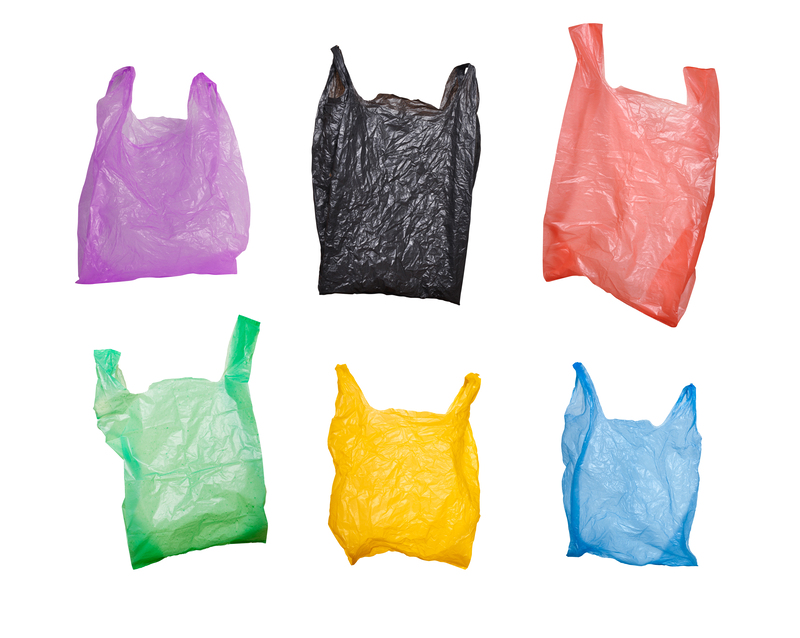The Future of Packaging Waste and Cardboard Disposal Strategies
The world is facing an unprecedented challenge when it comes to the management of packaging waste and the disposal of cardboard materials. As e-commerce and home delivery services surge, so does the demand for innovative, sustainable solutions to handle this ever-growing problem. What does the future hold for packaging waste and cardboard disposal? Let's dive deeply into the evolving landscape of sustainable packaging, advanced recycling technologies, and eco-friendly disposal strategies.

Understanding the Scope of Packaging Waste
Every year, millions of tons of packaging waste are generated globally, significantly impacting the environment. Cardboard, in particular, dominates packaging materials due to its versatility and cost-effectiveness. However, the rapid acceleration in packaging consumption demands new disposal strategies and smarter waste management solutions.
Why Cardboard Packaging Remains Prevalent
- Lightweight and Durable: Makes shipping products inexpensive and efficient.
- Easy to Print and Brand: Enhances product appeal and marketing.
- Recyclable: Offers a sustainable option--when recycled properly.
Despite its benefits, cardboard packaging waste poses a serious environmental concern if not managed correctly. Only a portion of discarded cardboard is recycled or reused, with the rest ending up in landfills, decomposing slowly, and contributing to greenhouse gas emissions.
Current Cardboard Disposal Strategies
Traditional Recycling Techniques
Traditional cardboard recycling involves collecting, sorting, pulping, and repurposing cardboard waste. While municipal recycling programs are widespread, varying contamination levels and collection inefficiencies hinder their effectiveness.
- Collection and Separation: Cardboard is picked up curbside, sorted from contaminants such as greasy pizza boxes, tape, and plastic.
- Pulping Process: The clean cardboard is pulped with water, separated from fibers, and turned into new paper products or packaging materials.
- Market Demand: Recycled cardboard is used to make new boxes, chipboard, or even wall liners.
However, as waste volumes soar, traditional recycling is reaching its limits. The future demands smarter, more efficient cardboard disposal systems.
Landfilling and Incineration: Outdated Solutions
Some packaging waste, including certain types of cardboard contaminated with food or oil, is still sent to landfills or burned for energy. These methods have a significant environmental impact, releasing methane, leachates, and greenhouse gases. Sustainable alternatives must replace outdated disposal tactics to meet the demands of modern waste management.
Innovative and Sustainable Cardboard Disposal Strategies
Advanced Sorting and Smart Bins
The future of packaging waste hinges on advanced technologies. Smart sorting systems that leverage artificial intelligence, optical recognition, and sensors can differentiate between recyclable and non-recyclable materials with unprecedented accuracy.
- AI-driven Waste Sorting: Robots and conveyor systems identify cardboard grades and contaminants, boosting recycling rates.
- Smart Bins: Urban areas are deploying bins that notify collection teams when full and automatically compact contents, reducing transportation emissions as well.
- Blockchain Tracking: Some innovators use blockchain to trace the journey of packaging from manufacturer to recycling, increasing accountability and transparency.
These strategies will revolutionize cardboard packaging disposal, reducing human error and maximizing resource recovery.
Extended Producer Responsibility (EPR) Programs
Countries around the world are increasingly mandating Extended Producer Responsibility. Under EPR, producers must manage and finance the disposal and recycling of packaging they introduce to the market.
- Increased Accountability: Producers design packaging with end-of-life recycling in mind.
- Financial Incentives: Companies can pay less if their packaging is easier to recycle or compost.
- Collaborative Solutions: Businesses partner with recyclers, innovators, and environmental organizations.
EPR programs encourage manufacturers to use less packaging and opt for more eco-friendly cardboard disposal strategies.
Biodegradable, Compostable, and Reusable Packaging
Forward-thinking companies are designing packaging that is biodegradable, compostable, and reusable. These alternatives have a much lower environmental impact than traditional materials.
- Biodegradable Cardboard: Cardboard coated with natural wax or plant-based film can break down harmlessly without leaving microplastics.
- Compostable Packaging: Clean cardboard waste can be composted for soil enrichment, closing the loop on organic waste.
- Reusable Packaging Models: Some companies are experimenting with sturdy, returnable cardboard boxes that customers send back for reuse, reducing waste volumes.
Reusable and compostable packaging solutions hold enormous potential for reducing packaging waste at the source.
Embracing the Circular Economy
A circular economy for cardboard packaging emphasizes keeping materials in use for as long as possible. This approach minimizes extraction, reduces waste, and stimulates innovation.
- Design for Recyclability: Packaging is created to be easily dismantled and repurposed into new products.
- Local Reprocessing: Community-based recycling centers process cardboard locally, cutting transportation emissions.
- Upcycling: Creative businesses turn used cardboard into furniture, insulation, or art, giving it a second life beyond traditional recycling.
Circular models are essential for a sustainable future in packaging waste management.
Global Trends Shaping the Future of Cardboard Disposal
Government Regulations and Policy Shifts
As the urgency of the waste crisis grows, governments are implementing regulations designed to reduce packaging waste and promote responsible cardboard disposal strategies.
- Single-Use Packaging Bans: Some regions are restricting single-use plastics and non-recyclable cardboard packaging.
- Landfill Tipping Fees: Higher fees for landfill disposal of packaging materials are incentivizing better recycling.
- Mandatory Composting: Encouraging households and businesses to compost clean cardboard waste, where feasible.
These policies spur innovation in the packaging industry and ensure a more sustainable approach to waste.
Consumer Awareness and Responsibility
The modern consumer demands sustainable packaging and supports brands that prioritize ethical disposal practices.
- Informed Choices: People check for recycling, composting, or reuse labels on packaging.
- Crowdsourced Recycling: Apps allow communities to share tips and updates about recycling centers and cardboard drop-offs.
- DIY Composting: Homeowners are finding new ways to transform clean cardboard into fertilizer for gardens and community green spaces.
A rise in eco-consciousness will be a major driver in the evolution of packaging waste management.
The Role of E-commerce and Retailers
Retail giants and online marketplaces are at the front lines of packaging waste innovation.
- Right-Sized Packaging: Companies use algorithms to match packaging to product size, drastically cutting cardboard waste.
- Re-Pack Programs: Some retailers collect used boxes from customers for reuse in shipping new orders.
- Partnerships with Recyclers: Major brands partner with local cardboard recyclers to offer drop-off points for consumers.
The e-commerce sector's dedication to sustainable packaging will shape the future of waste reduction and reuse.
Emerging Technologies in Cardboard Waste Management
Robotics and Automation
Robotic technologies will become central to both recycling plants and logistics centers by automating tedious processes:
- Sorting Robots: Vision systems enable robots to identify cardboard types and contaminants faster and more effectively.
- Automated Compressors: Compact and bale cardboard efficiently, reducing storage and transportation costs.
- On-Demand Reprocessing: Facilities convert old cardboard into new packaging material on-site, minimizing shipping and carbon footprint.
With these advances, recycling centers will handle higher waste volumes with less wear on the environment.
Machine Learning for Contaminant Detection
Machine learning algorithms can be trained to detect food residue, oil, plastics, and tape on cardboard waste, rejecting contaminated items before they slowdown recycling operations.
- Image Recognition: High-resolution cameras identify materials in real-time.
- Data Analytics: Waste management companies predict contamination trends to adjust collection strategies accordingly.
- Process Automation: Allows smart sorting lines to be reconfigured on the fly for new types of packaging waste.
Innovative Reprocessing Techniques
New technologies are making it possible to recycle more cardboard waste than ever before, including previously unrecyclable materials:
- Enzyme-Based Recycling: Biodegrades oily or soiled cardboard, making more waste recyclable.
- Waterless Pulping: Reduces water consumption and energy use during recycling.
- Carbon-Neutral Processing: Uses renewable energy to power recycling plants, shrinking the carbon footprint.

Challenges in Implementing Future Packaging Waste Solutions
Despite immense progress, there are still major hurdles to achieving sustainable cardboard packaging disposal.
- Contamination Issues: Food and chemical residues reduce recyclable yields.
- Infrastructure Limitations: Rural areas and developing economies may lack reliable recycling and composting facilities.
- Economic Barriers: Advanced sorting equipment and recycling innovations require significant investment.
- Consumer Participation: Waste segregation and responsible disposal depend on cooperation from the general public.
Overcoming These Challenges
To meet these challenges head-on, a multi-faceted approach is required:
- Education: Schools, businesses, and governments must prioritize education about proper cardboard recycling and composting.
- Public-Private Partnerships: Joint investments in infrastructure ensure scaling of new disposal strategies.
- Incentive Programs: Reward communities and companies that excel in minimizing packaging waste.
- Innovation Grants: Support research into biodegradable coatings, AI-powered sorting, and new reprocessing technologies.
Conclusion: Reimagining Packaging and Cardboard Disposal for a Sustainable Tomorrow
The future of packaging waste and cardboard disposal strategies is bright, provided we harness technology, innovation, and human responsibility together. The industry is on the brink of a revolution--characterized by AI-guided recycling, biodegradable packaging, and circular economy principles--that promises to dramatically reduce our ecological footprint.
Consumers, producers, and governments all have a pivotal role to play in shaping this future:
- Producers must design smarter, eco-friendly packaging and embrace EPR models.
- Consumers can insist on sustainable products and participate in recycling and composting programs.
- Governments should incentivize innovation and invest in advanced waste management infrastructure.
The collective commitment to packaging waste reduction and sustainable cardboard disposal strategies will safeguard our environment and create new opportunities for green growth. The time is now--to innovate, collaborate, and build a more sustainable world, one box at a time.